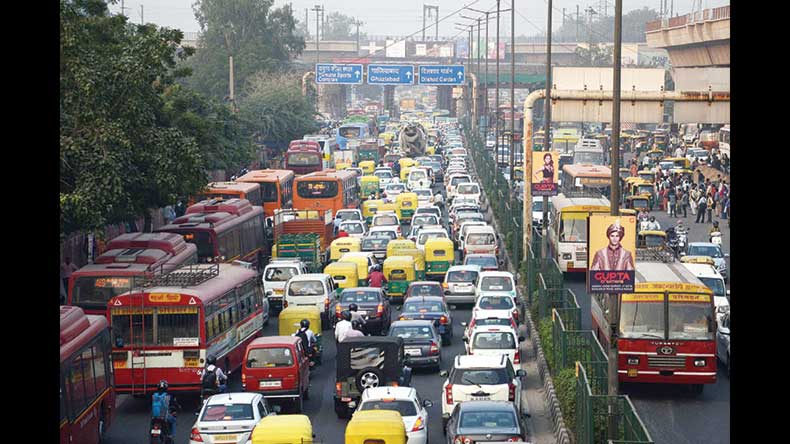The odd-even scheme had very limited impact in checking air pollution in New Delhi and the results diminished with time, experts have told The Sunday Guardian, while batting for early implementation of Bharat Stage VI emission norm, introduction of low emission zones, on-board diagnostics and checking system for new fleet of vehicles, and emission trading schemes like CDM in brick kilns in Ghaziabad, Faridabad and Panipat and other areas that surround the national capital.
“In Delhi, you have four-five factors that contribute equally to air pollution levels. They are transport, road dust, biomass burning and industry,” said Sumit Sharma, fellow, The Energy and Resources Institute (TERI), alluding to why the odd-even scheme introduced earlier this year was an insufficient attempt to check air pollution. “Odd-even did not bear the desired result. You have to clean the new fleet of vehicles that come into the city, to arrest pollution due to transport. Government of India has already announced the Bharat Stage VI emission norm, which will come into effect from 2020 and the best quality of fuel in the world will come to India,” Sharma told this newspaper. He said the measure needs to be supplemented by other majors such as strengthening of inspection and maintenance system to see that emission remains within the standards for used vehicles.
Despite the odd-even scheme, air pollution levels have not changed from what they had been in the last four-five years. (Safar data) Annual averages monitored at 10 different locations in different parts of the city did not change much. They remained about 110-120 microgram per metre cube against the standard national average of 40 microgram per metre cube. But according to WHO guidelines, above 10, the health impact starts. That means that we are almost four times above that cut off.
According to Dr Mrinal Sircar, HoD of Pulmonology Department and Critical Care, Fortis Hospital, Noida, polluted environment is affecting health in many manners in NCR, and more notable of them are cardiovascular and respiratory diseases. He said that according to a US study, if the particulate matter in the air went up by 10%, the risk of cardiovascular diseases or major events such as a heart attack or need for coronary procedures or strokes, goes up by as much as two and a half times. NCR is not immune from the phenomenon, he said.
With reference to a 2013 assessment made by WHO’s International Agency for Research on Cancer (IARC), which concluded that outdoor air pollution is carcinogenic to humans, with the particulate matter component of air pollution most closely associated with increased cancer incidence, especially cancer of the lung, Dr Sircar said: “It is possible when such high level of pollution enters, it initiates incriminatory reactions in the lungs. The effects may not be limited to respiratory tract and affects other organs also. Particles in the air also carry Redons, which are radiations in the background and they would find entry into the human body and may also be contributing.” He added that researchers have also concluded that there is an association between outdoor air pollution and increase in cancer of the urinary tract/bladder.
‘Transport, road dust, biomass burning and industry, all contribute towards pollution inDelhi.’
Talking about the pollution levels in NCR and its impact on health, he remarked, “You cannot see the horizon, so you know how bad it is. It is pretty serious here.”
According to experts, the overall system of PUC testing needs to be revamped by introducing new technologies, as most people skirt PUC testings. Sharma advocated the use of on-board diagnostics. “We have recommended all vehicles should have on-board diagnostics and checking system. What you need to put in place are the systems which can take out data from these systems,” he said.
Other experts believe that electric mobility has to be enhanced. If public system could be available in electric mobility, it will decrease pollution level considerably, they maintain.
Sharma further recommended condition pricing in place of the odd-even formula. “You can have low emission zones in different areas where pollution levels are very high, and if anybody wants to take a vehicle in these zones, you have to pay an extra price,” he said.
Industries, although not many of them are located in New Delhi, are also a major contributor to air pollution. There are industries in Ghaziabad, Faridabad, Panipat, besides as many as 1,500 brick kilns around NCR, which contribute to deteriorating air quality. There are standards in place to minimise the pollution they make, but there are no proper monitoring and enforcement. “That can be ensured by implementing emission trading schemes like CDM (Clean Development Mechanism). There have to be cleaner production prices,” Sharma said.

